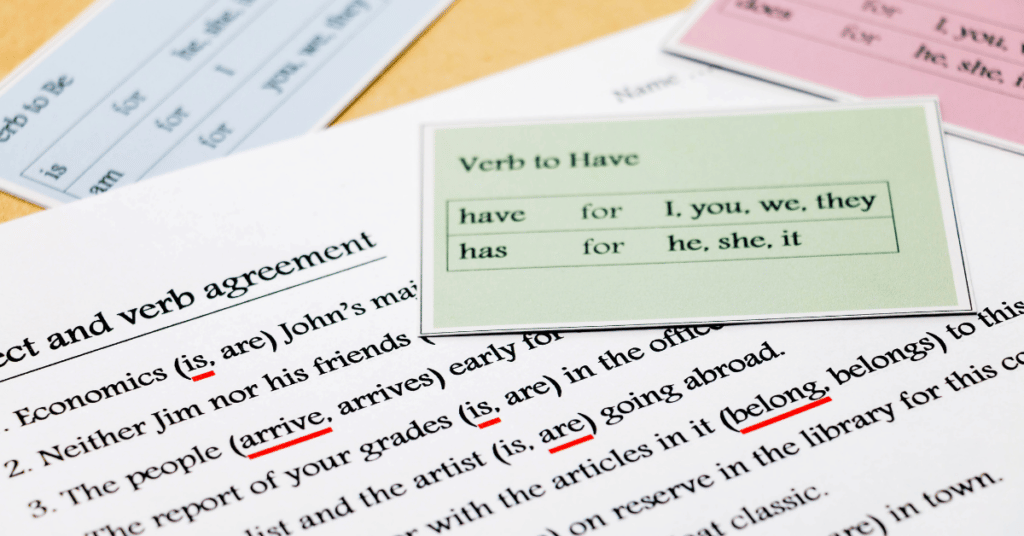Your starting point in preparation for the Secondary English paper is to know the Format inside out.
I am talking about the number of papers and the exact number of sections in each paper.
Below is a comprehensive discussion on the Secondary English exam assessment format for 2021 with the dos and don’ts about doing this paper creditably.
The English O Level Paper for 2021 can be broken down into these parts:
• Paper 1 – Writing ( 1 hour 50 mins) ~ 65 marks. Weightage – 35%
• Paper 2 – Comprehension (1 hour 50 mins) ~ 50 marks. Weightage – 35%
• Paper 3 – Listening Comprehension (45 mins) ~ 30 marks. Weightage – 10 %
• Paper 4 – Oral (20 mins) ~ 30 marks. Weightage – 20%
Total Weightage 100%
Now, let us begin with breaking down the 4 Secondary English Papers below:

Secondary English Paper 1
Section A: Editing – 10 marks
What is this section about?
This is where you have 10 blanks that you have to fill in.
What you need to do: You will have to find the grammar mistake in that line and circle it. Then write down the correct form instead. Two of the blanks do not require you to find mistakes as those lines are correct.
This section is testing you on the finer points of English grammar. The setters want to make sure that you do not just get through the Secondary English exam by memorising or lifting sections.
In this section, you will be forced to do this grammar exercise properly. So, auxiliary verbs, singular/ plural words, tenses and prepositions will be tested strictly.
This is the most advanced form of grammar testing for Secondary English exams.
Your task
You will need to work on your grammar skills. Just the practice of editing Secondary English papers alone will not be enough.
Practise writing out sentences and check to see how you have done.
It is very difficult to discover grammatical mistakes on your own.
There are some good Secondary English grammar exercises around and you may check them out.
Or you could consult a tutor who deals with this.
Whatever you do, please do not ignore this section as it has 10 marks.
Section B: Situation Writing – 30 marks
What is this section about?
This is the section where you will be given an illustration paper with content for each diagram or picture. It will tell a story of an activity or process.
Your task
You will need to write about this situation in 250 to 350 words.
You will be tested on your ability to use the given information in such a way that it answers the question.
You will also be expected to add relevant information and explanations of your own.
You will be tested on the tone used. Sometimes it could be a letter format. In such a case, there may not be illustrations but you will have a guideline instructing you how to write the letter.
The letter could be an email and it could be formal or informal. You have to change your tone according to the format of the question.
Eg. The formal letter will have to be more professional in tone and the informal could be warm and friendly.
Section C: Continuous Writing – 30 marks
What is this section about?
This is where you need to put in the most work.
Though this is also 30 marks like the previous section, it is actually slightly more difficult (in my humble opinion) as Secondary English students do not have any guidelines or illustrations to follow.
Your task
You will need to rely on previously learned topics and write according to the question given.
There is more freedom in writing this section as you have free rein over the flow of the argument or story.
It may be descriptive, narrative, reflective, argumentative or expository.
Whatever the genre, your task is to recognise it and choose the one which best suits you.
This is an area where many Secondary English students make the wrong choice and unfortunately, need to restart.
The preparation for this section is the longest as students need to build up content.
For the argumentative questions, you will need world content and social statistics at your fingertips.
Many students bypass this and opt for the narrative question thinking that it is easier.
It is not easier to do but it requires different techniques.
Writing a story well is not as easy as it sounds.
You need to think of a really good plot and build it up well.
If you satisfy these requirements, it will be an easy task for you.

Secondary English Paper 2
Section A: Visual Text – 5 marks
What is it about?
This is an illustrated section where there are several pictures or just one picture.
In some cases, there could be lots of captions for each picture with a heading.
There is at least one heading or an exclamatory message.
This is followed by 4-5 questions with a total of 5 marks.
Your task
You will need to answer the questions which test you on your ability to recognise what the action is about.
Questions will focus on both pictures and content.
You are expected to recognise the ‘message’ or what the picture is trying to say.
Your ability to construe this message legibly is the aim of this section.
Are you able to recognise a message?
Can you tell what a picture is trying to convey?
Are you able to make that connection?
This is really what your task is all about.
Section B: Comprehension Text B
What is this about?
This is the first of the two comprehension texts.
The first text is a narrative passage that tests mainly on analysis, vocabulary and inference skills.
Some are literary questions based on the language used.
Your task
You will need to answer all the questions according to the marks. Some are 1 mark questions, others are 2 or 3 marks.
Answer fully for the 2 and 3 mark questions. If you write only a single line for a 2 or 3 mark question, it is obviously wrong.
The focus in this paper is on your ability to explain and elaborate.
This must be done fully with the details from the text.
You need to read the Secondary English passage carefully and refer back to it when answering.
Section C: Comprehension Text C – 25 marks (including Summary 15 marks)
What is this about?
This is the information-based text followed by a summary question.
The comprehension questions are shorter compared to text B.
More marks are accorded to the summary question which has 15 marks. Therefore, you need to put in extra effort for the summary section.
Your task
You will need to focus on the textual analysis and figure out what the data and information are relaying.
Pay close attention to the way the information is imparted.
Questions will deal with the arguments presented in this text.
You will need to dissect what these arguments are and answer accordingly.
The summary portion is to be answered in 80 words.
You will need to write a concise summary that has about 8 to 10 points in total.
Marks will be allocated according to the points selected which answer the question and your word count which should not exceed 80 words.
You are not supposed to ‘lift’ from the passage which means that you will need to edit and paraphrase. This is where your vocabulary skills come in handy.
Did I not mention that vocabulary skills are a great asset? 😊
The Secondary English papers are all about vocabulary really.

Secondary English Paper 3
Listening Comprehension
What is this about?
This is a shorter paper. Students will have to listen to a recording of someone talking about a topic and answer questions according to what they heard.
The recording will be played twice and you will need to listen carefully and try to memorise the details.
Your task
You should recall the information in the recording so you will need to store it away in your short-term memory bank.
That is really the main task for this paper.
It is all about recalling and answering.
There is no written text.

Secondary English Paper 4
Oral
What is this about?
This is a sort of interview with the oral examiner.
You will need to be seated before the examiner and firstly, read a passage.
Then you will watch a video and comment on it when questions are asked.
Your task
The main focus of this exam is to ensure that you can answer ‘on the spot.’
Spontaneous answers are expected and you will have to answer in full sentences.
The last question will be on something related to society or the environment.
Therefore, you need to be a little savvy about what is going on in the world.
No time to be an ostrich! It’s no use burying your head in the sand any longer.
Start watching the news and reading those snippets!
Get out of your comfort zone and look around you.
If you can do this, your Secondary English oral exam will be a breeze and you will be able to answer no matter what sort of video you are faced with.
Oh, and did I mention that you need vocabulary skills? 😊
Yes, you need them in full force to complete this rigorous exam which focuses on every aspect of the English language, both written and verbal.
All your skills will be tested and you need to be in top form when you are doing this paper.
It is quite a challenge but it can be an exciting one as I have already mentioned ‘how’ you can obtain good grades in the various sections.
You really need to follow the steps right now.
There is no time like the present, so get out of that ostrich pose and get cracking! 😊
